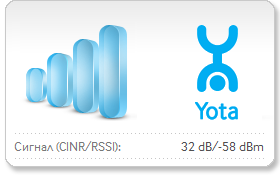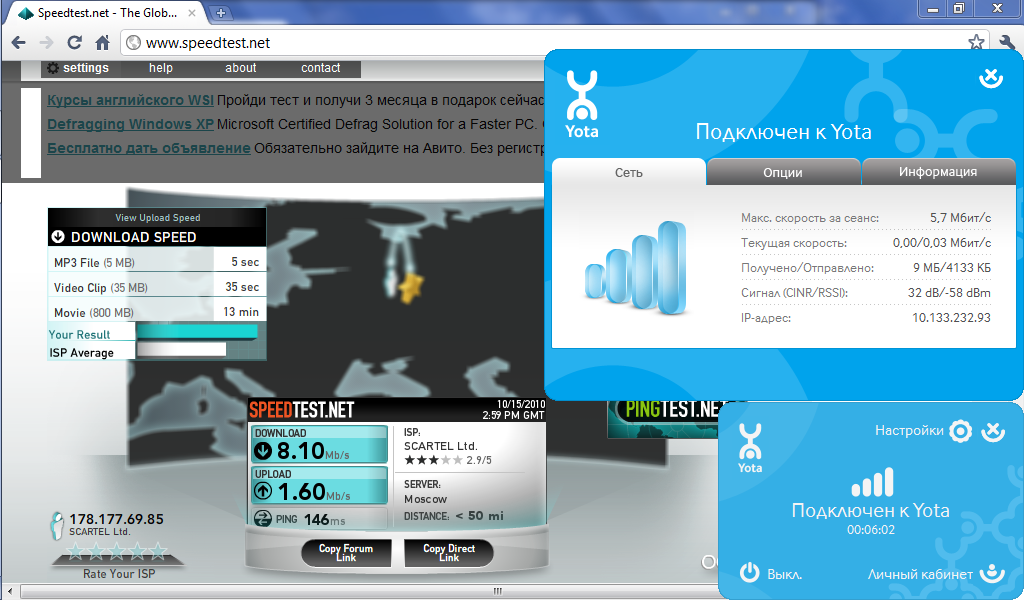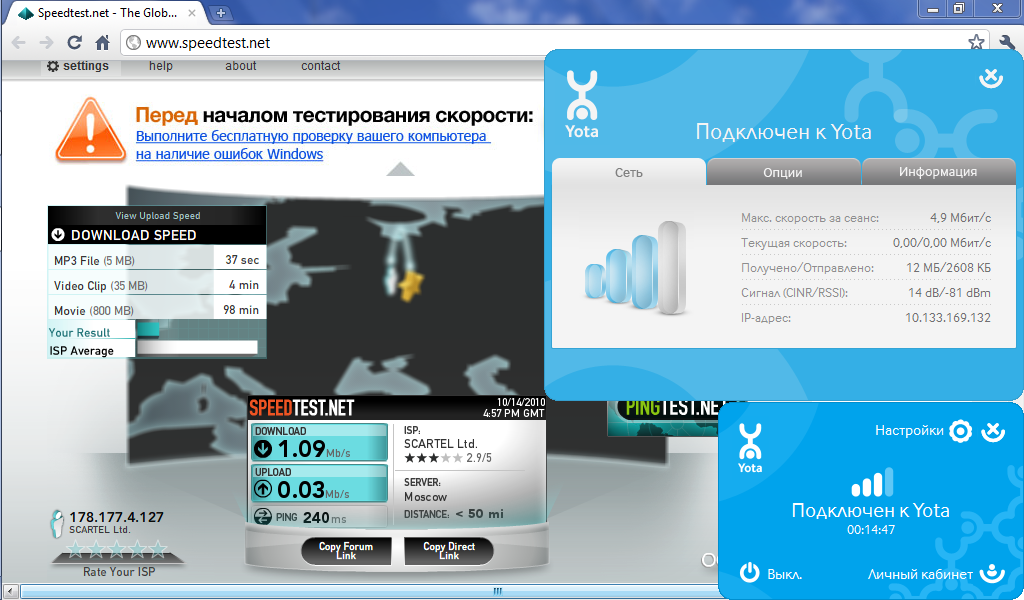Signal quality criteria in WiMax networks
 In the article “Testing Wi-Fi antennas for WiMax reception” I cited the CINR and RSSI parameters as the results of my experiments, only roughly imagining what these values reflect. I was ashamed to remain in ignorance, and I figured out this issue in detail.
In the article “Testing Wi-Fi antennas for WiMax reception” I cited the CINR and RSSI parameters as the results of my experiments, only roughly imagining what these values reflect. I was ashamed to remain in ignorance, and I figured out this issue in detail. I have no doubt that there will be Habralyudi (such as shogunkub ) for whom this topic will not open anything new, but many, I am sure, will be as interesting to understand as I am.
On Habré this question was touched upon in the article “WiMAX Base Station” , but I would like to cover it a little more fully.
RSSI (Received Signal Strength Indicator) - literally: an indicator of the strength of the received signal. By force in this abbreviation should be understood the power of the radio signal.
In IEEE 802.11, RSSI is an indicator of the power level received by an antenna, expressed in "parrots" - abstract units selected by the manufacturer of wireless equipment.
The physical meaning is carried by units mW (mW) or dBm.
Yota engineers made sure that Yota Access recalculated the received signal into good, suitable dBm units, which I will write about below.
The higher the RSSI number, or the less negative it is (just the case of Yota), the stronger the signal.
Before moving on to the decibel and its derivatives, you need to talk about CINR.
CINR (Carrier to Interference + Noise Ratio) also called SINR(Signal to Interference + Noise Ratio) - literally: the ratio of the (useful) signal to interfering and noise. The established Russian term is the signal-to-noise ratio. Measured in dB.
A value of 0 dB means that the signal and noise are equal, a positive number means that the signal is stronger than noise, negative means that it is weaker.
The user, of course, is better that the signal is as strong as possible noise :)
Consider the decibel value in more detail.
Decibel (decibel, dB) is a logarithmic quantity that reflects the ratio of a physical quantity (usually power or intensity) to a given reference level.
The decibel ratio is the tenfold decimal logarithm of the ratio of the two powers: The two-fold power

difference will be written in decibels as ~ 3dB.
A tenfold power difference will be recorded as 10dB.
A power ratio of 1000 to 1 in decibels will be recorded as 30dB.
The beauty of the decibel is that it is convenient to express very large and very small quantities in it, due to its logarithmic nature.
Often a decibel gets a suffix that shows the reference value used.
The suffix m in dBm stands for milliwatts. That is, L (dBm) = 10 * log (P / 1mW)
Knowing the RSSI and CINR for the WiMax signal, we can fully evaluate the signal quality and please the user with a picture with sticks:

Decipher.
CINR 32dB - The received signal is more than 1000 times stronger than noise.
Is it a lot or a little?
Even if the signal and noise are equal, with good error correction, operation is possible. Of course, in this case, you should not count on a high data transfer rate.
RSSI -58dBm– the received signal is almost a million times weaker than 1 milliwatt, that is, it is one nanowatt (1nW). A microwave operating at the same frequency fries at 800W.
Values differ by 12 orders of magnitude. WiMax radiation is so safe :)
These are ideal parameters (which are observed at my place, on UMPC with an Intel 5150 controller and a good antenna), the speed in this case reaches a theoretical maximum of ~ 10Mbit / sec.

For comparison, a less joyful picture (the controller works without an antenna at all, the unstable reception area is simulated):

CINR 14dB, RSSI -81dBm - the signal is “only” 40 times stronger than noise (25 times worse), the signal power is 1000 times less.
The speed with such "blatantly bad" parameters is about 1Mbit / sec.
Instead of a conclusion, I will answer the following question:
“Full signal 4 sticks, RSSI -60 - -65 dBm. CINR from 0 to 5 dB. Why is the speed disgusting? ”
The answer is simple. RSSI and CINR are not directly related. With normal RSSI, we see that the user is faced with noise (interference from a jammer, or something else) that prevents him from using the Internet.
